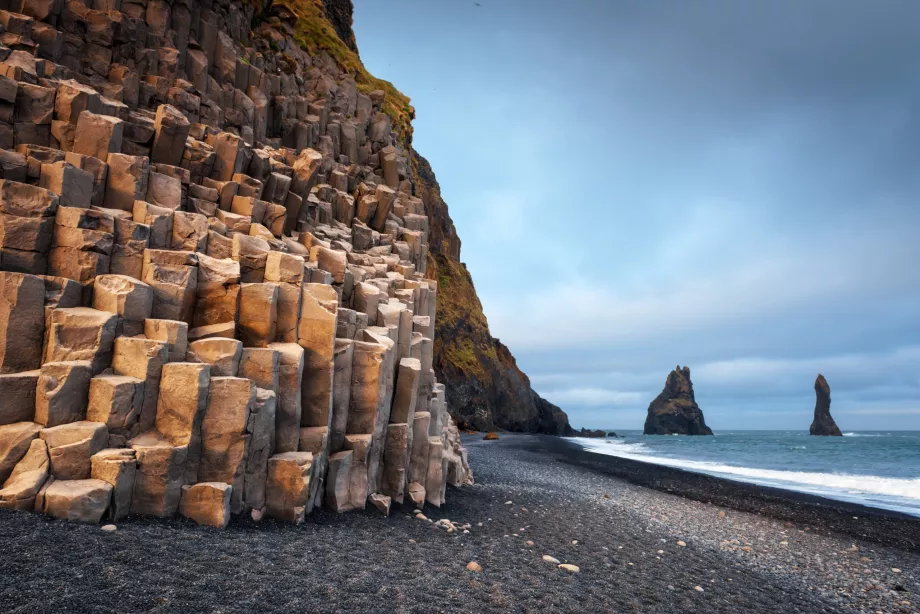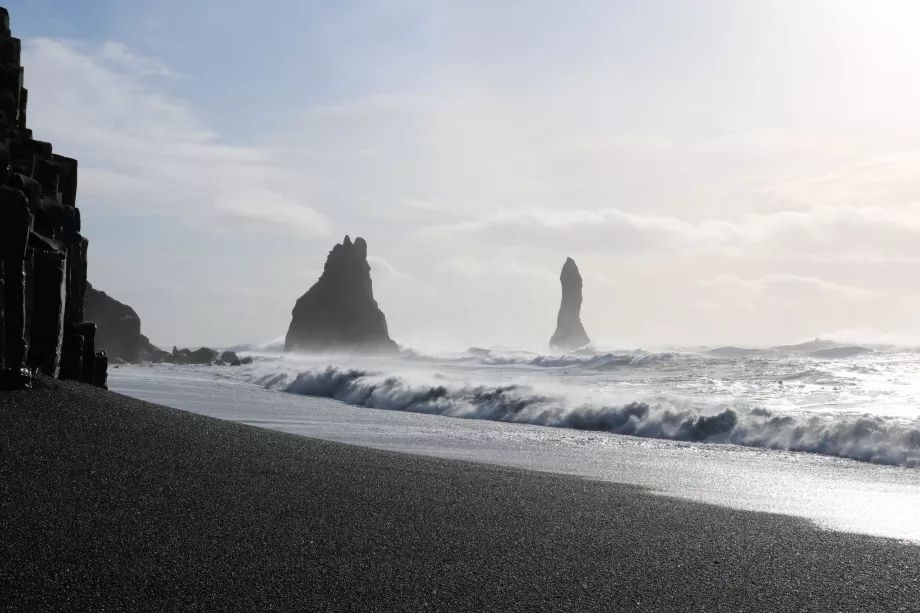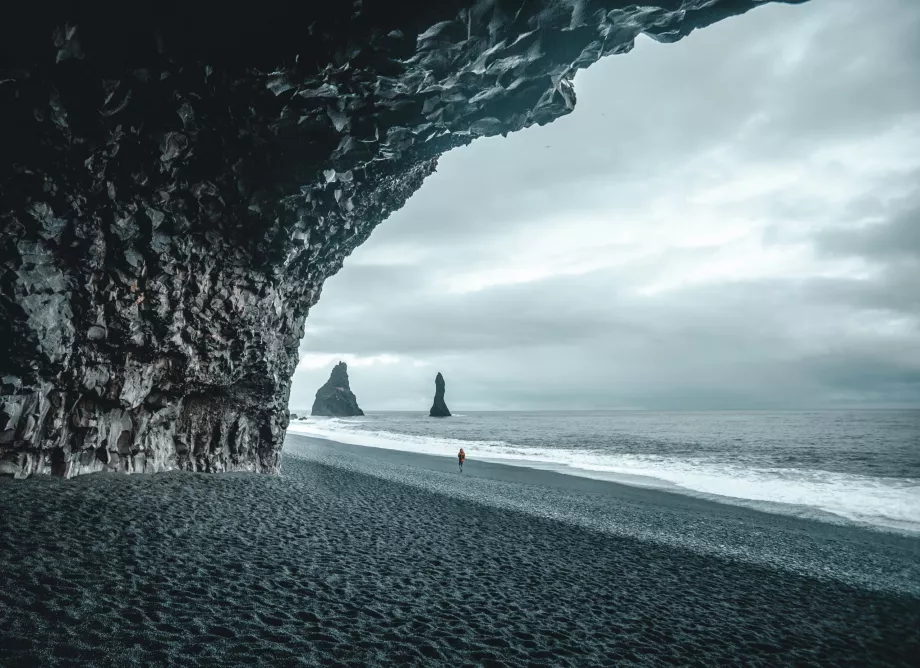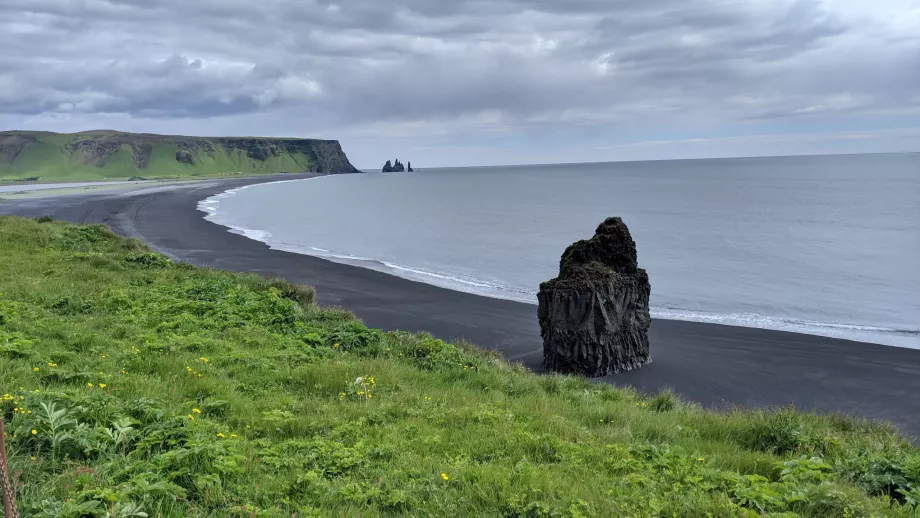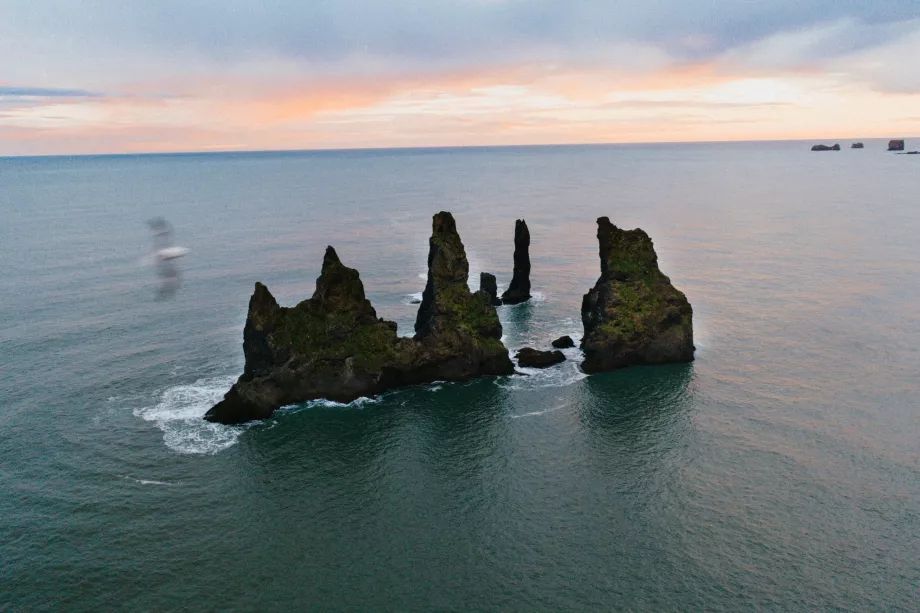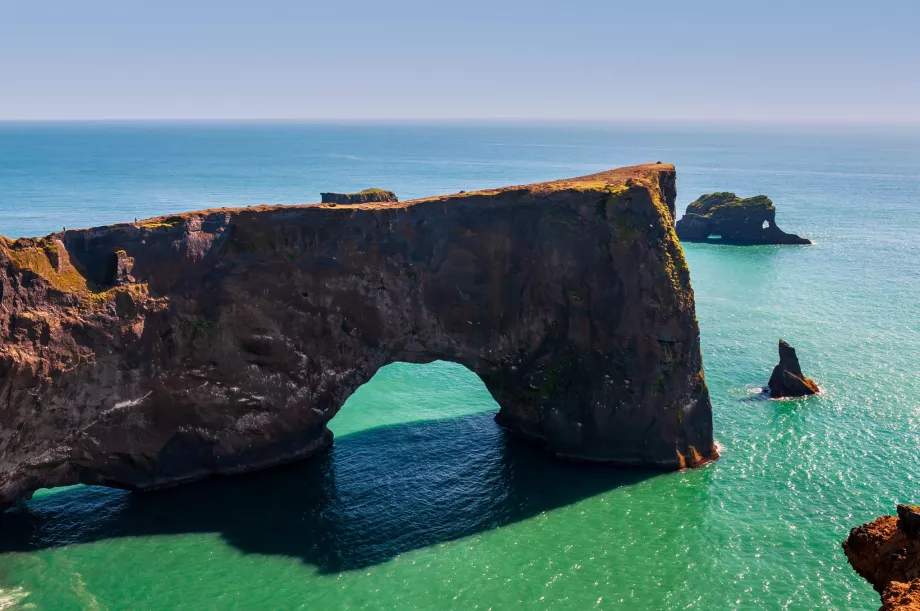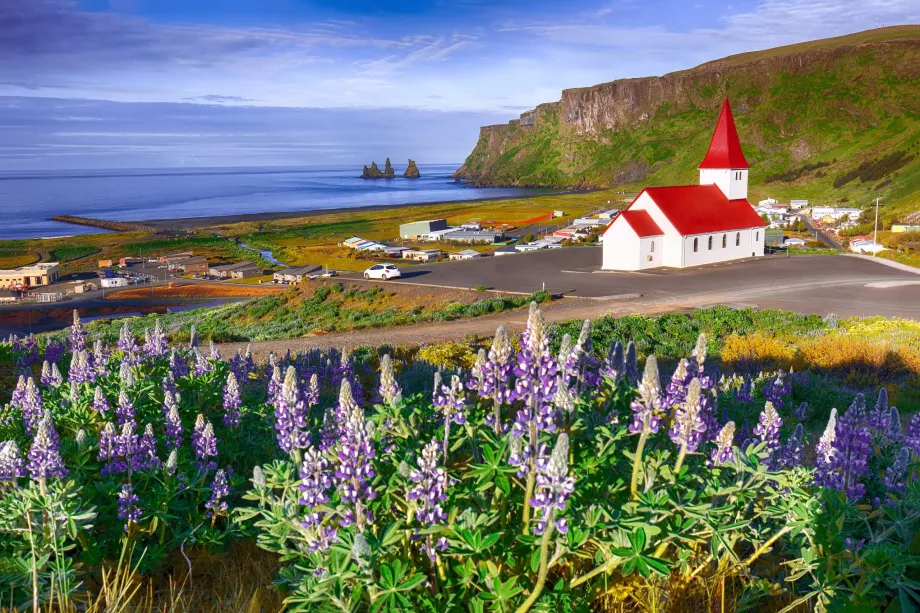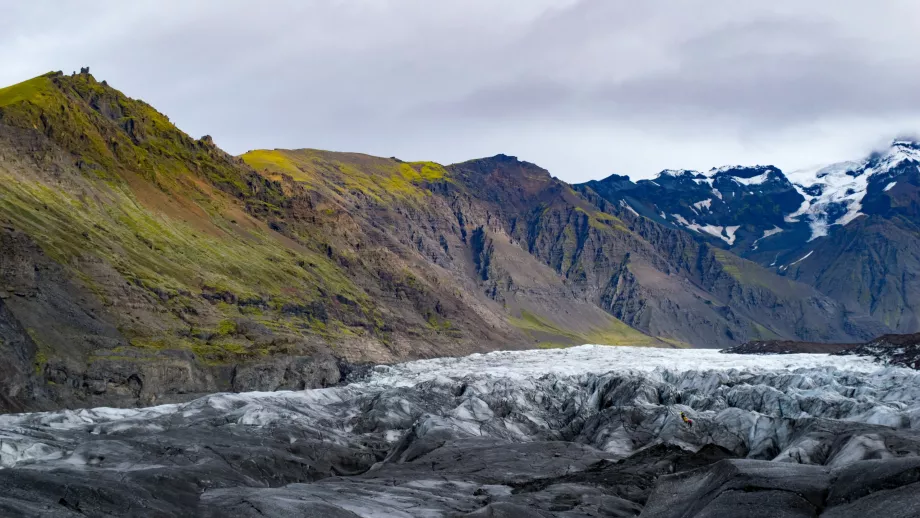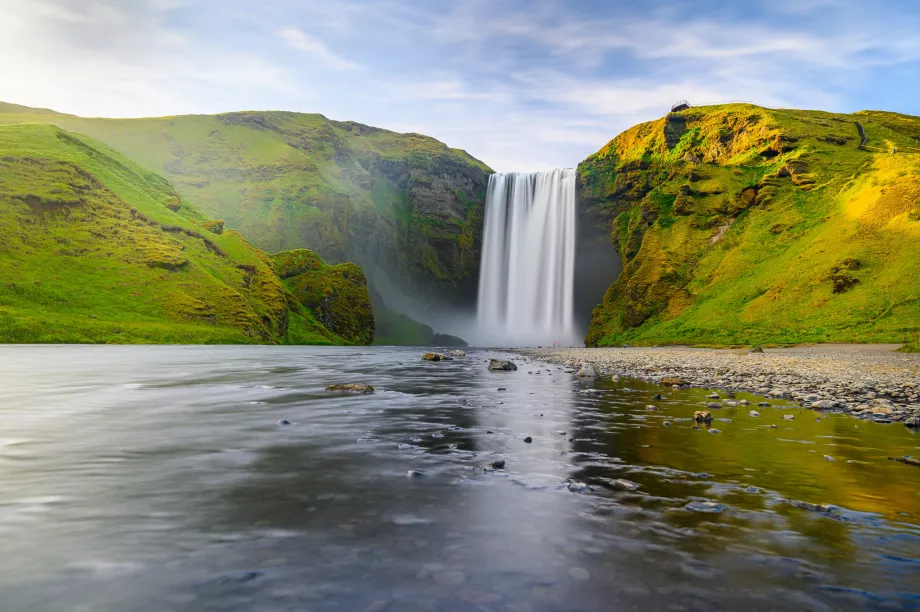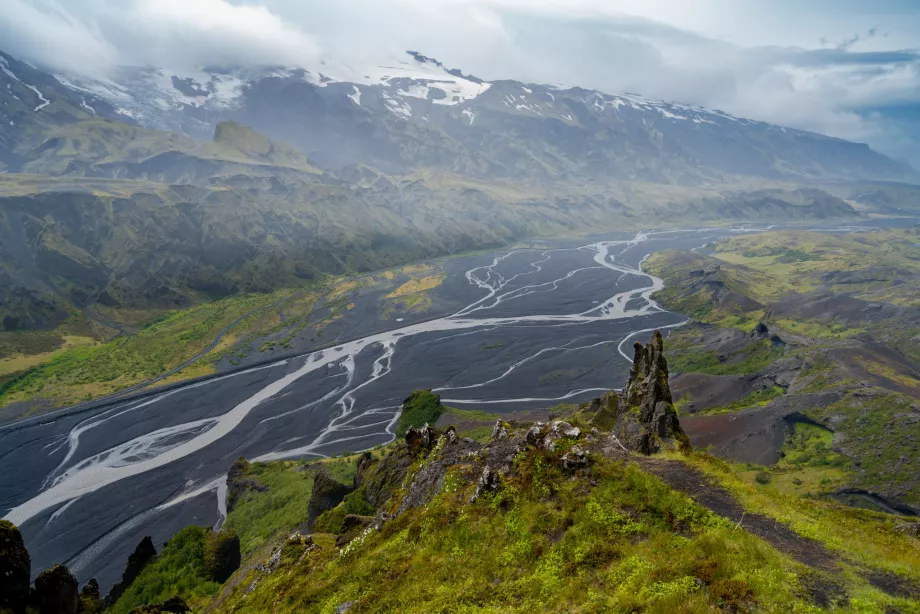Reynisfjara
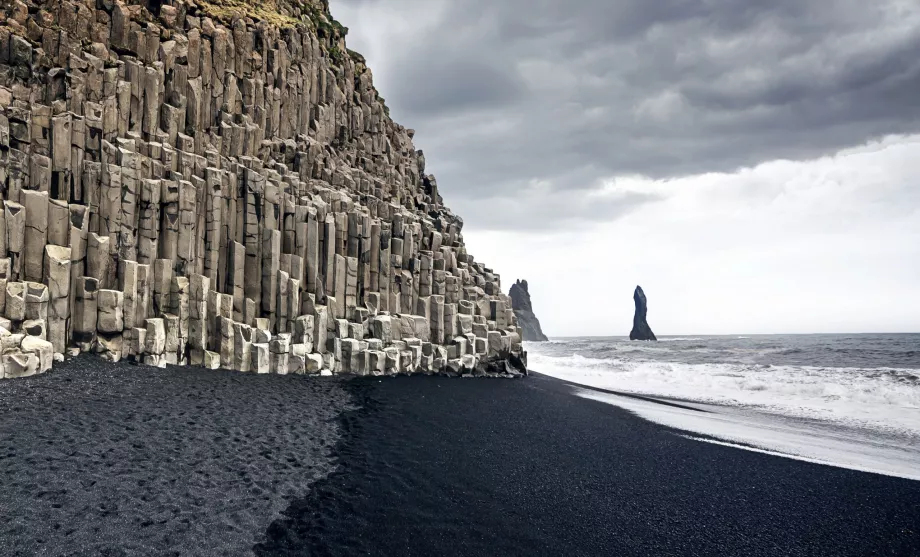
Reynisfjara is probably Iceland's most famous beach, with its dark black volcanic sand and impressive backdrop of cliffs, caves, rocks and lush green meadows.
According to many rankings, Reynisfjara is even considered the most beautiful beach in the world. Because of its shape, it is also known as Black Sand Beach, and although there are hundreds, perhaps thousands, of black beaches in Iceland, the name "Reynisfjara" will help search engines or maps find this beach.
Compare car rental prices in Iceland
The beach is almost 3km long and runs from the cliffs of Reynisdrangar along the marshland to the famous Dyrhólaey rock formations. Reynisfjara Beach is located near the picturesque town of Vík i Myrdal.
The basalt columns of Gardar
One of the most famous beach locations and most photographed objects in Iceland is the eastern tip of Reynisfjara, with its tall light grey basalt columns contrasting with the black of the volcanic sand and rocks.
In the background, 'around the corner' of the beach, you can then admire the impressive and up to 60 metre high cliffs of Reynisdrangar, which literally stick out of the ocean about 100 metres from the shore.
Along the beach to Dyrhólaey
After you've snapped a photo of the famous basalt columns with the even more famous Reynisdrangar cliffs, take a roughly hour and a half walk along the perfectly flat and wide beach westward to the other famous cliffs of Dyrhólaey with its huge rock gate.
This walk is ideal for reflection and meditation, as you will find yourself in a place unlike any other in the world. The churning ocean on one side, the endless blackness of the sand stretching many hundreds of metres in front of and behind you, bordered in some places by haunting cliffs, will simply force you to think deeply.
Hiking trail along the cliff
If you want to see Reynisfjara beach from the height of the cliff, which you can photograph along with the basalt columns from its base, head to the village of Vík i Myrdal, from where a marked hiking trail leads along the cliff edge with breathtaking views of the beach and the cliffs of Reynisdrangar.
The route is about 6.5 km long and will take you about 2 hours, see the route map on en.mapy.cz. The trail will take you to the edge of a 150m high cliff, expect an initial short but high elevation gain.
Accommodation
The area around Reynisfjara is a popular place to stay for 1 night while sightseeing around Iceland. This will give you more time to explore the area, after all you could easily stay here for a whole afternoon. Look for the largest concentration of accommodation in Vík í Mýrdal, 11km away, but there are several accommodations right on the 215 road heading to the beach:
- Guesthouse Reynir - rooms with basic amenities and shared bathrooms, all very clean and efficient, and most importantly very cheap by Icelandic standards with prices well under 73 eur per night
- The Barn - a well rated hostel offering dormitory accommodation from 59 eur per night, but also en-suite 2 bed rooms for a decent 128 eur per night
How to get there?
The beach is easy to get to, with a road leading right up to its western end by the basalt columns. It is close to the main circular route number 1 around Iceland 187 km from Reykjavik (route map: google.com/maps). From road number 1, turn onto the smaller asphalt road number 215 (signposted "Reynishverfi"), which takes you to the very end with parking, toilets and a cafe.
The car park is chargeable and costs 1000 isk. Booking and payment must be made via the parka.is app.
The beach is accessible by car all year round.
Stay safe
ATTENTION!!! The beach is not only one of the most beautiful, but also one of the most dangerous in Iceland! The danger is caused by a phenomenon called "creeping waves" (sneaker waves), which can appear completely unexpectedly even on sunny days and calm seas. These waves come ashore and literally take the ground (sand) from under your feet. From here it is only a step to disaster, just stagger, fall and the waves will pull you into the sea, from where it will be very difficult to get out.
The creeping waves look really harmless and many tourists even "play" with them by going as close to the water as possible and then running away from the incoming waves.
Don't do this, it can cost you your life. A good clue is a clearly visible part of a completely dry beach that the waves don't normally reach. Only move along these sections and NEVER turn your back to the sea.
What to see around
Discover all the places to see in Iceland.
Any questions left?
If you have any questions or comments about the article...

